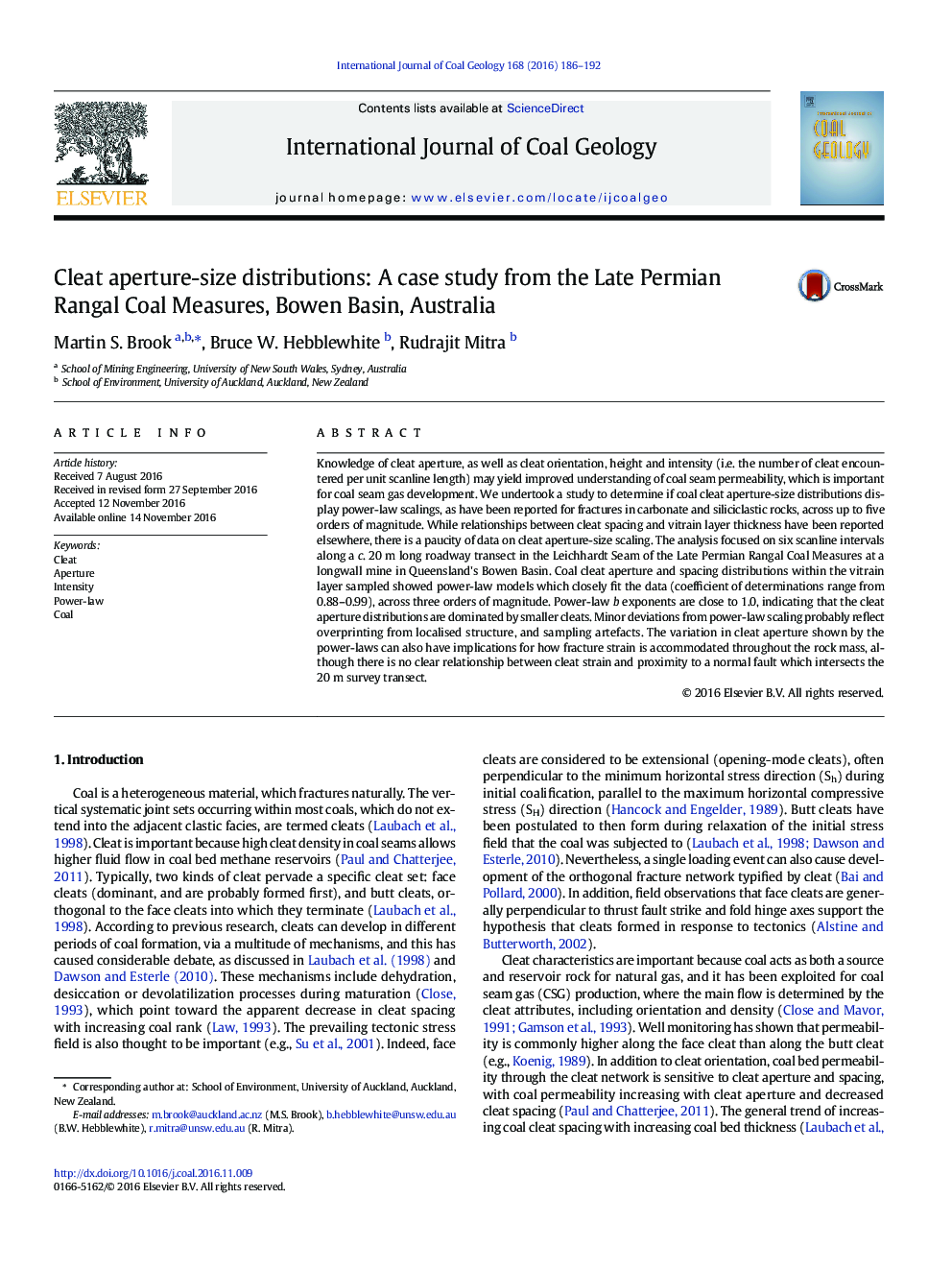| Article ID | Journal | Published Year | Pages | File Type |
|---|---|---|---|---|
| 5483812 | International Journal of Coal Geology | 2016 | 7 Pages |
Abstract
Knowledge of cleat aperture, as well as cleat orientation, height and intensity (i.e. the number of cleat encountered per unit scanline length) may yield improved understanding of coal seam permeability, which is important for coal seam gas development. We undertook a study to determine if coal cleat aperture-size distributions display power-law scalings, as have been reported for fractures in carbonate and siliciclastic rocks, across up to five orders of magnitude. While relationships between cleat spacing and vitrain layer thickness have been reported elsewhere, there is a paucity of data on cleat aperture-size scaling. The analysis focused on six scanline intervals along a c. 20Â m long roadway transect in the Leichhardt Seam of the Late Permian Rangal Coal Measures at a longwall mine in Queensland's Bowen Basin. Coal cleat aperture and spacing distributions within the vitrain layer sampled showed power-law models which closely fit the data (coefficient of determinations range from 0.88-0.99), across three orders of magnitude. Power-law b exponents are close to 1.0, indicating that the cleat aperture distributions are dominated by smaller cleats. Minor deviations from power-law scaling probably reflect overprinting from localised structure, and sampling artefacts. The variation in cleat aperture shown by the power-laws can also have implications for how fracture strain is accommodated throughout the rock mass, although there is no clear relationship between cleat strain and proximity to a normal fault which intersects the 20Â m survey transect.
Related Topics
Physical Sciences and Engineering
Earth and Planetary Sciences
Economic Geology
Authors
Martin S. Brook, Bruce W. Hebblewhite, Rudrajit Mitra,
